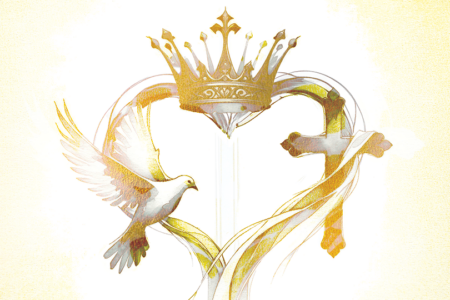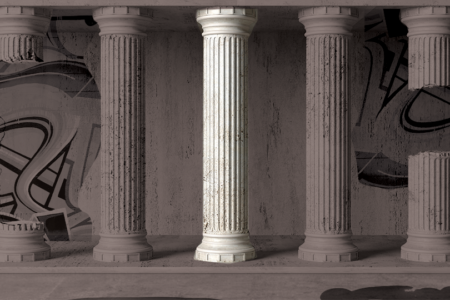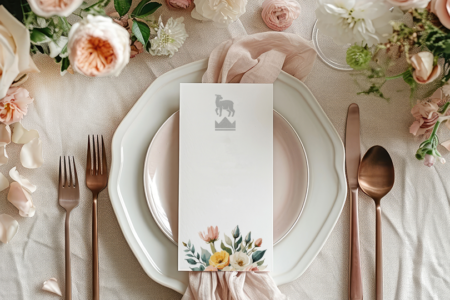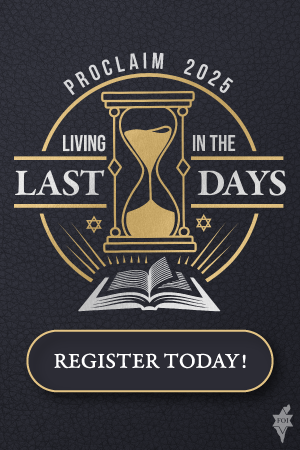Under the Chuppah
Israel My Glory In Depth is a video interview series that explores the author’s motivation in writing their article.A look at the traditional Jewish wedding
The decision to marry is one of the most important decisions anyone can make. The Torah (Pentateuch) clearly states that God made Eve as “a helper comparable to” Adam because “it is not good that man should be alone” (Gen. 2:18).
Acknowledging God’s truth, the great Jewish sages taught that marriage was part of God’s divine plan. They permitted men to suspend their study of Torah to attend a wedding and allowed the sale of a Torah scroll to gain the means to marry.
The Talmud (a compendium of rabbinic commentaries) states that without a wife, a man has no joy, happiness, or bliss. Some sages even questioned the humanity of a man who did not marry.
Although Scripture provides no details regarding the actual marriage ceremony, it does reveal four elements of marriage: the betrothal period (Dt. 20:7), which lasted a full year; singing—beautiful, romantic singing (Song 4:1–7); one week of feasting (Gen. 29:22); and the consummation of the marriage (vv. 23, 30).
The Talmud provides guidelines regarding age, days, eligibility, and procedure. With so many important things to consider, it is no wonder matchmaking became a prominent profession in the Jewish world of long ago.
The Preliminaries
Most North American Jews today tend toward the secular in their observances. But the following rituals used to be common. They are not practiced much these days, except by the very observant.
Long ago, a year separated the betrothal period from the consummation, allowing the bridegroom to prepare the home and the bride to certify her virginity. Today, these stages are combined into one ceremony called kiddushin.
On the Sabbath before the wedding, the bridegroom attends the synagogue service and is called up (Hebrew, aliyah) to the bema (platform) to read the Torah. The congregation showers him with candies, representing wishes for a sweet married life. Other preparations include the bride purchasing a tallit (prayer shawl) for her husband-to-be; and the couple enters a period of fasting, signifying their sorrow for sin and their desire for a new beginning. The man and woman immerse themselves separately in a mikveh (ritual bath) of natural water for the purpose of sanctification. As they go into the water, they proclaim their devotion to each other and separation from others.
When they arrive at the synagogue before the wedding, they sign a ketubah, or marriage contract. Written in Aramaic, this document is a religious contract binding the bridegroom to fulfill all financial duties to his wife. The private signing is witnessed by two people who must be present at the public reading during the ceremony.
The Ceremony
The wedding ceremony begins as the veiled bride walks toward her bridegroom, usually escorted by both of her parents. At the front of the aisle, the couple stands together under the chuppah (bridal canopy). The chuppah is still somewhat of a fixture at Jewish weddings today—and even among secular Jews.
The bride’s procession to this point represents her walk to the new home the bridegroom has prepared for her. The canopy represents the couple’s new home, as well as the establishment of their home together. As they stand under the chuppah, the rabbi recites a blessing over the wine, hallowing the name of God and blessing the marriage.
He then reads the ketubah and marriage vows, which the couple repeat. The bridegroom places an unadorned ring on the bride’s right index finger (the most visible) and declares, “You are consecrated unto me with this ring in accordance with the laws of Moses and Israel.” Later, the bridegroom places the ring on the traditional ring finger, from which, it is believed, a vein runs straight to the heart.
Sheva berachot (seven blessings) are recited to bless and thank God for the wine, creation, the creation of man, man’s creation in the image of God, the future return of God’s chosen to Zion, the bride and bridegroom, and the joy of all weddings.
It is traditional for the bridegroom to stand on the left and the bride to his right, as the Scriptures state, “At Your right hand stands the queen” (Ps. 45:9). The bride then circles her bridegroom, sometimes alone, sometimes accompanied by her mother, his mother, and her bridesmaids.
As the ceremony concludes, the bridegroom breaks a wine glass by smashing it with his foot, as the guests shout, “Mazel tov!” (good luck). The breaking of the glass is said to signify sorrow over the destruction of the Temple. Another interpretation is that the smashing of the glass is irrevocable and permanent; so, too, may the marriage last for all time.
In many services, a time is then set aside for the couple to be alone together to reflect on what just took place. This ritual is taken from Genesis 29:22–23, when Jacob and Leah consummated their marriage. Finally, a reception is held to congratulate the newlyweds and celebrate their union.
Just as marriage is important in the eyes of Judaism, so should it be significant to true believers in Jesus. We, the church, are the bride of the Savior and soon-coming Messiah, the Lord Jesus Christ, who is our Bridegroom. During this age of grace, we wait for Him every day until He returns for us.
Photo: Adobe Stock








